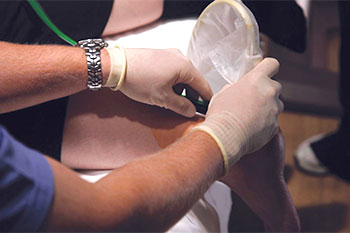
A condition that often results in serious heel pain is known as Achilles tendonitis. This condition may form when the Achilles tendon is damaged as a result of overuse. This particular injury can be very serious, as the Achilles tendon’s main function is to connect the lower half of the calf muscles to the heel bone. If this tendon becomes damaged, it may result in difficulty walking and completing everyday tasks, as well as cause extreme discomfort and pain.
It’s more common for athletes to experience Achilles tendon injuries, as they’re more likely to be participating in activities that would call for repetitive movement, such as running or jogging. This kind of repetitive movement over time is likely to cause stress on the tendon. When athletes abruptly increase their performance level without properly training or warming up their bodies, they may also injure the Achilles tendon, which may lead to inflexibility in the calf muscles.
In order to prevent this kind of injury, it’s suggested to perform stretches—particularly focused on the calf region—about one to three times a day to keep the area flexible. Focusing on building strength in your calves is also advised. If you believe you’ve injured your Achilles tendon, there are some actions you can take to help alleviate the discomfort. Icing and massaging the affected area may help to calm the pain, as well as practicing light stretches.
If you’re having difficulty walking or icing the area does not alleviate the pain, it’s highly advised that you speak with a podiatrist for professional care and an advised treatment plan.
Tenex Health TX Technique

Patients suffering from chronic pain due to damage in their tendons, especially the Achilles tendon, may benefit from the use of Tenex technology. Tenex is a minimally invasive procedure designed to relieve patients of their pain, reinstate their mobility, and return patients to their normal activities. By using ultrasound imaging, the area of damage can be viewed and pinpointed for the procedure.
- Minimally invasive procedure
- Quick pain relief
- Restoration of mobility
- Normal activities can be resumed
After it is located via ultrasound, the area of damage is numbed using local anesthetic. A tiny incision is then made, allowing for the insertion of the TX MicroTip. The TX MicroTip then breaks down and removes the damaged tissue without affecting the surrounding tissue. Tenex also stimulates cell activity to accelerate the healing process.
After the procedure, a small bandage is applied to protect the incision. No stitches are needed! Patients are typically able to quickly return to normal activities because no sedation is required.
To learn more about Tenex, contact us today!
